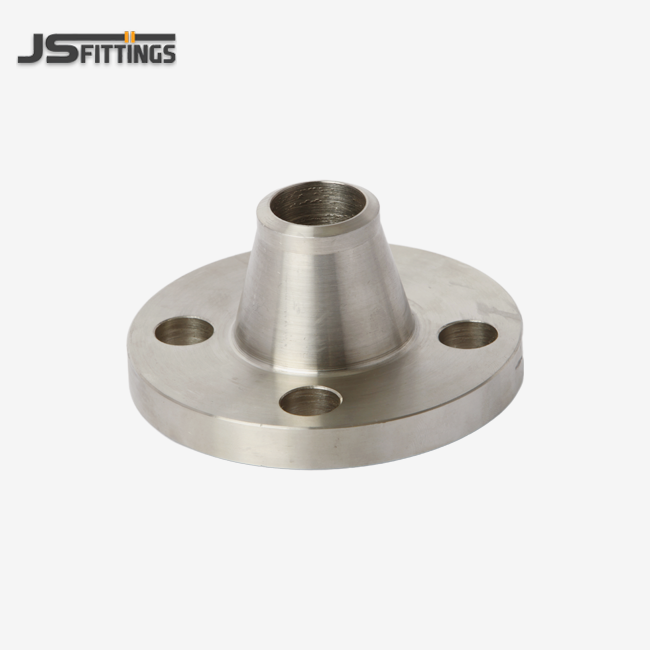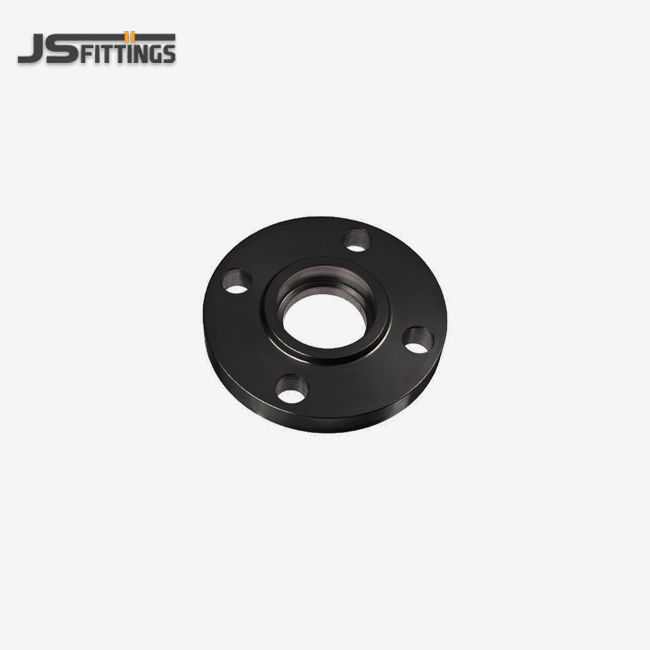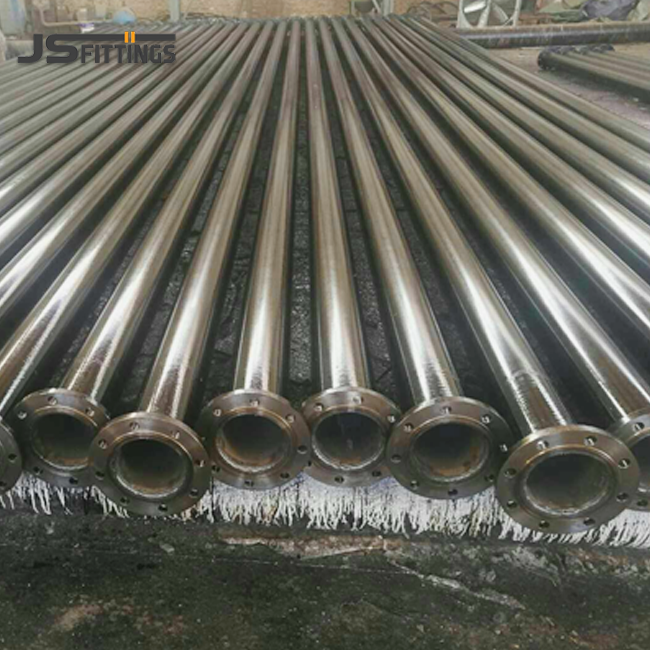Common alloys: 304/304L, 316/316L, duplex and nickel alloys
When it comes to buttweld end cap fittings, the choice of alloy significantly impacts the performance and longevity of your piping system. Let's explore some of the most commonly used alloys and their unique properties:
304/304L Stainless Steel
Austenitic steels don't rust and are easy to shape. 304 and 304L stainless steel are examples. A lot of people who work with chemicals, drugs, or make food use these kinds because they can handle a lot of different acidic situations. How much carbon they have is the main difference between 304 and 304L. When you join 304L, cages are less likely to form than when you use 304.
316/316L Stainless Steel
304L and 316L stainless steel rust at different rates. 316 and 316L are better at handling strong acids like chlorides. This metal is less likely to break or crack when molybdenum is added to it. They work well in chemistry processes and near water because of this. Even though 304L has less carbon, 316L has even less. Intergranular rust is less likely to happen, and it's easy to join.
Duplex Stainless Steel
There is a mix of austenitic and ferritic stainless steels in duplex stainless steels, such as 2205 and 2507. This makes them strong. Not only are these types strong and tough, but they also don't crack, split, or stress rust easily. Duplex stainless steel buttweld end cap fittings are often used in chemical processing, electrolysis, and offshore oil and gas plants that are offshore. They need to be strong and not rust.
Nickel Alloys
Nickel metals like Inconel 625, Hastelloy C-276, and Monel 400 are often the best choice when things get tough or get very hot. And they're very strong against many dangerous things, like oxidizing and reducing conditions, even when they are very hot. Nickel metal buttweld end caps are often used in nuclear, chemical processing, and aircraft fields where standard stainless steels might not work.
How does material grade affect corrosion resistance and temperature limits?
The material grade of buttweld end cap fittings plays a crucial role in determining their corrosion resistance and temperature limits. Understanding these relationships is essential for selecting the right fitting for your specific application and ensuring long-term performance and safety.
Corrosion Resistance
Different types of materials have different amounts of resistance to rust, which is mostly due to their chemical makeup:
- 304/304L: It has good resistance to corrosion in slightly acidic settings, but it can be damaged by pitting and fissure corrosion in media that contain chloride.
- 316/316L: The molybdenum adds more protection to pitting and crevice rust, which makes it good for use in naval and chemical processing uses.
- When it comes to chloride-rich settings, duplex grades often do better than austenitic grades when it comes to resistance to stress corrosion cracking and limited rust.
- Nickel metals are very good at resisting rust in a lot of different active media, such as strong acids and alkaline solutions.
Temperature Limits
The temperature limits of buttweld end cap fittings are directly related to their material grade:
- Up to 870°F (1650°C), it can live in salty soil. But it might go bad if it stays between 425°C and 870°C (800°F and 1600°F) for a long time.
- Type 304/304L is more likely to break than Type 316/316L when it gets hot.
- On the first floor, temperatures below 300°C (572°F) are used most of the time because higher temperatures can damage things.
- Nickel metals work really well when the temperature is high. Some types can handle temperatures of up to or above 1200°C (2192°F), depending on the metal and the use.
When selecting buttweld end cap fittings, it's crucial to consider both the corrosive nature of the media and the operating temperature range to ensure optimal performance and longevity of your piping system.
Seamless vs welded construction and its metallurgical impact
How buttweld end cap parts are put together can make a big difference in how well they work and how strong they are. There are two main ways to put something together: all in one piece or two pieces joined together. Each way has its own pros and cons, and they are not all the same. Before you buy metal parts for your job, you should think about these things.
Seamless Construction
Seamless buttweld end cap fittings are manufactured from solid bar stock or pipe through a series of forming operations, such as forging, machining, or hot working. This process results in a homogeneous structure without any weld seams.
Advantages of seamless construction:
- Uniform grain structure throughout the fitting, reducing the risk of localized weak points
- Higher pressure ratings due to the absence of weld seams
- Improved resistance to fatigue and cyclic loading
- Better performance in high-temperature applications
Metallurgical impact:
- Consistent mechanical properties across the entire fitting
- Less chance of flaws that can happen when welding, like not fusing or having spots
- Possible to fine-tune the grains during the making process, which would make the material stronger and tougher.
Welded Construction
Welded buttweld end cap fittings are fabricated from flat plate or pipe sections that are formed and welded to create the desired shape. This method allows for more flexibility in terms of size and customization.
Advantages of welded construction:
- Cost-effective for larger sizes and specialty fittings
- Greater flexibility in material selection and customization
- Ability to produce complex shapes and configurations
Metallurgical impact:
- Around the weld, there is a heat-affected zone (HAZ) that could change how it works.
- There may still be forces in the weld area that need to be treated with the right heat after welding.
- There could be microstructural changes in the weld and HAZ, which would affect their ability to fight rust and their functional qualities.
You should think about the working pressure, temperature, cycle loads, and other things when you have to choose between seamless and welded buttweld end cap fittings. Smooth fits may be better for important jobs that need to handle high temperatures or pressures because they are more stable and work better. But if the right checks and techniques are used, welding things together can be a cheap way to change their shape or make them bigger.
Quality Assurance and Testing
It's important to make sure that the buttweld end cap meets the standards and requirements, no matter what kind of building is being used. Among these are:
- Non-destructive testing (NDT), like X-ray, ultrasound, or magnetic particle screening, is used to find any flaws on the inside or outside of the object
- Hydrostatic pressure tests to make sure the fitting is solid
- Positive material identification (PMI) testing is used to check the makeup of a substance.
- Checks of the dimensions to make sure they meet the standards that matter (like ASME B16.9, EN 10253, GOST)
By understanding the metallurgical implications of seamless and welded construction, you can make informed decisions when selecting buttweld end cap fittings for your piping systems, ensuring optimal performance, safety, and longevity.
Conclusion
Pick the correct buttweld end cap fitting for your lines. It works well, lasts a long time, and keeps them safe. Know how the building was made, what materials were used, and how they were put together. This will help you make decisions that lower project risk, ensure compliance, and improve performance. You should get the tools you need from a maker you can trust, whether you're an EPC provider, a dealer, or a business end-user.
We at Hebei Jinsheng Pipe Fitting Manufacturing Co., Ltd (JS FITTINGS) have been making high-quality steel butt-weld pipe fittings, flanges, and pipes for over 40 years. Our modern production lines and many licenses, such as ISO 9001, CE, and GOST-R, make sure that our goods can be used in the toughest industrial settings. We have a wide range of materials and surface treatments to meet the needs of your project, whether you need standard-sized parts or ones that are made just for you.
FAQ
1. What are the main advantages of using buttweld end cap fittings?
Buttweld end cap fittings offer several advantages, including a secure and leak-proof closure for pipe ends, seamless integration into piping systems, and the ability to withstand high pressures and temperatures when properly selected and installed.
2. How do I choose the right material grade for my application?
Selecting the appropriate material grade depends on factors such as the corrosiveness of the media, operating temperature, pressure requirements, and environmental conditions. Consider consulting with a reputable manufacturer or engineering firm to ensure the best choice for your specific application.
3. Are there any special considerations for installing buttweld end cap fittings?
Proper installation of buttweld end cap fittings requires skilled welding techniques, adherence to welding procedures, and post-weld heat treatment when necessary. Ensure that the installation is performed by qualified professionals and that all relevant standards and regulations are followed.
4. How often should buttweld end cap fittings be inspected or replaced?
The inspection and replacement frequency of buttweld end cap fittings depends on factors such as the operating conditions, material grade, and industry standards. Regular inspections should be conducted as part of a comprehensive maintenance program, with replacement intervals determined based on the specific application and any signs of wear or degradation.
Quality Buttweld End Cap Fittings Manufacturer | JS FITTINGS
Looking for reliable and high-performance buttweld end cap fittings for your industrial projects? For all of your pipe system needs, you can count on JS FITTINGS. We can meet even the strictest needs because we offer a huge selection of materials, sizes, and customization choices. Our goods meet world standards and have been accepted by big oil and gas companies, so you can be sure they will work well on your projects.
Don't settle for subpar fittings that could compromise your system's integrity. Contact JS FITTINGS today at admin@chinajsgj.com to discuss your specific needs and discover how our expertise can benefit your next project. Let us help you achieve optimal performance, safety, and cost-effectiveness in your piping systems.
References
1. ASME B16.9-2018: Factory-Made Wrought Buttwelding Fittings
2. Stainless Steels for Design Engineers, by Michael F. McGuire, ASM International, 2008
3. Corrosion of Stainless Steels, by A. John Sedriks, Wiley-Interscience, 2nd Edition, 1996
4. Duplex Stainless Steels, by Iris Alvarez-Armas and Suzanne Degallaix-Moreuil, Wiley-ISTE, 2009
5. Nickel and Nickel Alloys, by Joseph R. Davis, ASM International, 2000
6. Welding Metallurgy, by Sindo Kou, Wiley-Interscience, 2nd Edition, 2003




_1758097857386.webp)